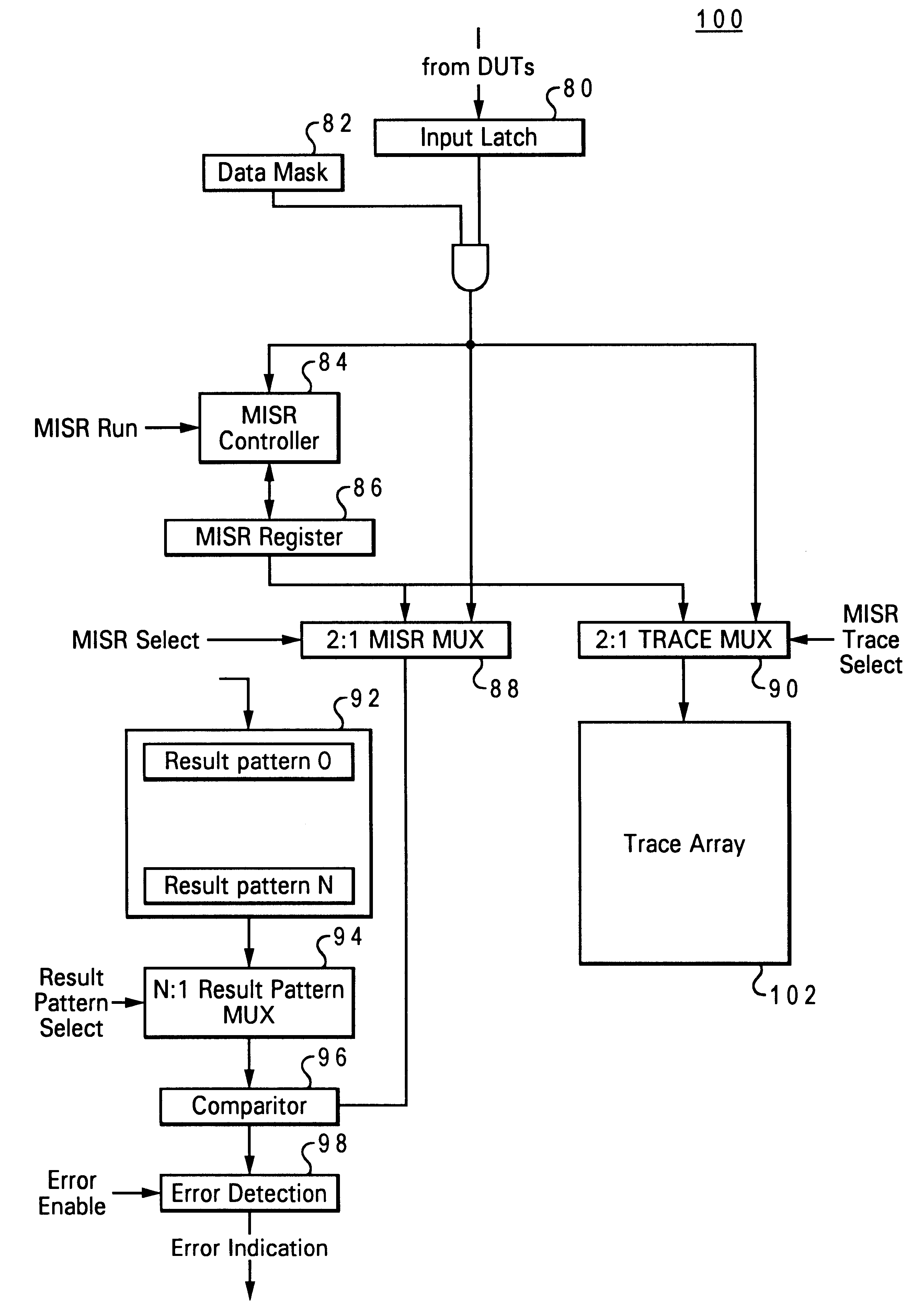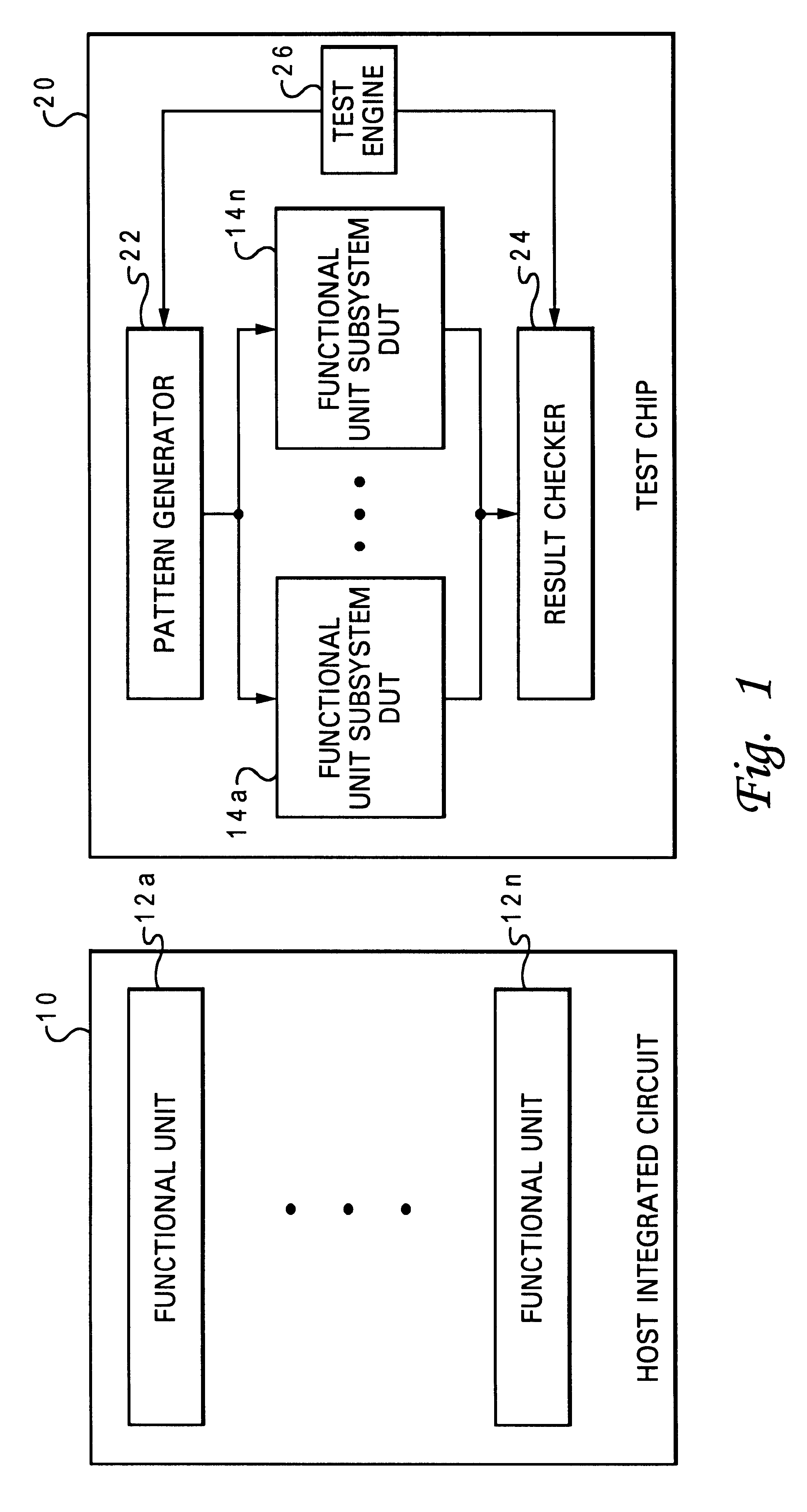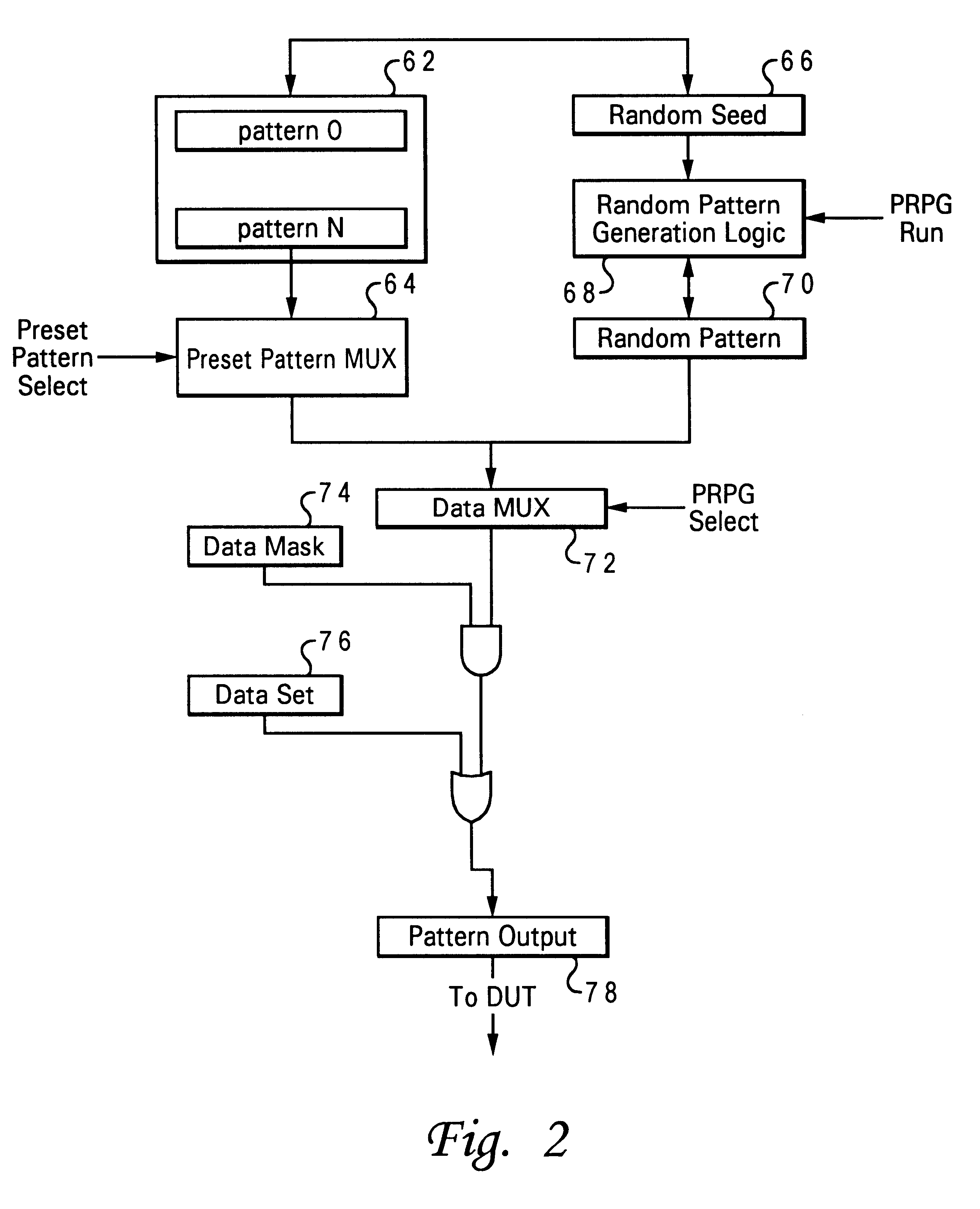Method and system for performing pseudo-random testing of an integrated circuit
a technology of integrated circuits and test chips, applied in the field of integrated circuit pseudo-random testing of integrated circuits, can solve the problems of increasing the complexity and density of circuit devices formed within a single chip, fewer i/o pins available, and several problems in regard to testing the proper operation of such integrated circuits
- Summary
- Abstract
- Description
- Claims
- Application Information
AI Technical Summary
Benefits of technology
Problems solved by technology
Method used
Image
Examples
Embodiment Construction
With reference now to the figures and in particular with reference to FIG. 1, there is depicted a block diagram representation of a host integrated circuit (IC) 10 and a test chip 20. Host IC 10 includes multiple functional units 12a-12n embedded within host IC 10 as is well known in the art. Typically, functional units 12a-12n are interconnected by a bus system (not shown) as needed for operation, supplied appropriate power (not shown) and synchronized in operation by a clock signal (not shown). Functional units 12a-12n may work together to perform processing functions. In addition, although not depicted, a production technology of the many available production technologies known in the art for manufacturing complex integrated circuits is employed for the manufacture of host IC 10. In particular, the production technology utilized may determine the effective speed at which a host IC 10 may be clocked to properly function. More particularly, with the advancement of production techno...
PUM
 Login to View More
Login to View More Abstract
Description
Claims
Application Information
 Login to View More
Login to View More - R&D
- Intellectual Property
- Life Sciences
- Materials
- Tech Scout
- Unparalleled Data Quality
- Higher Quality Content
- 60% Fewer Hallucinations
Browse by: Latest US Patents, China's latest patents, Technical Efficacy Thesaurus, Application Domain, Technology Topic, Popular Technical Reports.
© 2025 PatSnap. All rights reserved.Legal|Privacy policy|Modern Slavery Act Transparency Statement|Sitemap|About US| Contact US: help@patsnap.com



